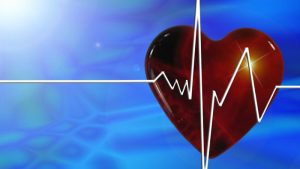 AI’s conundrum: Is it just correlation or cause?
AI’s conundrum: Is it just correlation or cause?
We need to know this. If we know what determines a condition, we will be in a better position to treat and prevent sicknesses. But how can we know?
By interpreting the increasing body of data, concludes Lynda Chin in her keynote address at the AI and Machine Learning (ML) Summit that precedes the HIMSS 2018 conference. “Artificial intelligence to rescue!”, Chin exclaimed.
There are several challenges on the way to determine if what is being identified is a correlation or a cause. One of them is building an adequate algorithm and training it to discover patterns.
But when is adequate good enough?
Don’t be fooled is a warning from Chin as well as from others in the field, because algorithm building and AI in general, is an iterative process – “We train an AI system just as we would train a doctor”, explains Chin. For this, we need data, “massive amounts”, she stresses.
Walking over the exhibition floor on the first day of HIMSS 18, it is very much noticeable that there is an explosion in tools to both generate and analyse the much needed masses of data.
However, with Internet of things (IoT) solutions proliferating, will they suffice the appetite for data?
“IoT of me”- a new opportunity for AI in healthcare
Seeing smart devices, textiles and shoes to measure vital signs and gait, pills with encapsulated cameras to swallow in order to avoid invasive surgery, IoT is virtually moving under our skin ― into an era some vendors coined as “IoT of me”.
In the “IoT of me” scenario, the patient-consumer is in a position to share this data with the care provider who can feed it into an electronic health record (EHR).
Please sir, can I have some more?
Eric Schmidt, Technical Advisor and former Executive Chairman of Alphabet Inc. (the parent company of Google), stressed the importance of additional data sources in his opening key note: “We need a second tier of information to supplement the EHR, mainly unstructured data like we have seen it in other industries.”
Mad for predictive analytics
Moreover, Schmidt points to the direction that the healthcare industry needs to move – ”The really powerful stuff is prediction. … What I want is prediction to be able to intervene earlier.” And this is happening now. Early adopters are lining up to leverage patient data in a new way. To this end, a plethora of solutions are on show deploying AI and machine learning to make the unstructured and structured data buried in those EHRs actionable. One example is the ability to flag areas of concerns to care providers, such as identifying patients with specific disease comorbidities (i.e. the presence of one or more additional diseases or disorders co-occurring with a primary disease or disorder). It could also highlight the imminent deterioration of a patient ahead of the actual event.
And like all those looking to allay the fears that the machines are not taking over, Schmidt stresses – “We don’t try to beat physicians; we look to augment the physician.”
Patient engagement is another crucial factor in the ability to improve the level of accuracy of a prediction. The better the engagement with the patient, the more encompassing the information on an individual, the better the prediction will be.
Speak up!
“Voice is natural, faster than typing, and accessible”, explains Jay Maxwell, Director Health Information, Mayo Clinic. The technology is here – Alexa, Siri and Cortana step forward – the microphones are good, the audio specialists like Harman International are on board and cloud technology is in place, finds Maxwell.
So, have we reached a critical mass for voice activation?
There is certainly much more impetus on the power of the voice, even as a medium for identifying biomarkers that are believed to indicate imminent cardiovascular events in a patient. And Schmidt endorses this by musing whether a transition from workflow-based to voice-based is the killer app needed to speed the digital transformation in healthcare.
It takes a village …and then some!
The sheer size of the show is indicative of the complexity of making healthcare IT being the tool it wants or needs to be to support better patient outcomes. At the core is the creation of a connected ecosystem to foster the overall advance of healthcare.
The role of infrastructure as an enabler is crucial, so is security and privacy, and interoperability. What is the role of the patient, it is not just about supplying information but creating behavioural changes.
There is much more to explore on the remaining days of HIMSS and CIC is at the heart of it.
Related research
Checkout the latest CIC research that outlines the network foundation for IoT and connected healthcare and the promise it offers for improving and advancing healthcare and patient outcomes. Each report also summarises network provider Cisco’s strategy and solution stack.
CIC Briefing Note: The network foundation for IoT and connected healthcare
CIC Briefing Note: Security priorities for IoT and connected healthcare
CIC Briefing Note: Streamlining clinical experiences in IoT and connected healthcare
CIC Briefing Note: Progressing the patient experience in IoT and connected healthcare

The blog was written by Cornelia Wels-Maug. It was first published by Creative Intellect Consulting and is reused here with permission.

 AI’s conundrum: Is it just correlation or cause?
AI’s conundrum: Is it just correlation or cause?
























[…] more proactive in treating patients and therefore much more effective in improving lives. An article from the Health IT Conference 2018 gives some insight into where healthcare is looking to utilise […]